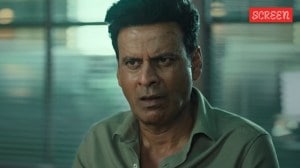‘The sphere of influence of the poor is phenomenal’
Dr Devi Shetty’s own room is right next to the post-operative pediatric unit. His day begins at 5.30 am and ends at 9.30 in the night. ...

Dr Devi Shetty’s own room is right next to the post-operative pediatric unit. His day begins at 5.30 am and ends at 9.30 in the night. Only Sundays are his day off. Twice a year he takes his family for a vacation. Every day, he reads literature on cardiac issues for 30 minutes. But for two hours, he reads books and magazines on business! ‘Do you know the three largest employers in the world,? he asks. They are the Chinese Army, the Indian Railways and the British Healthcare system. For 40 million people, they have a million care givers in Britain. Do you see the enormous opportunity? Governments think that healthcare is an expense. It is a great way to generate employment. It is an avenue to build the nation. The problem in India is that we associate healthcare with affluence. It should not be. Today, technology and new economic tools are making it possible to create a model that will disengage every service business from the concept of affluence. Poor people in isolation are helpless. In numbers, they constitute formidable economic power.’’ Where did Dr Shetty cross the chasm? It happened at the Guys Hospital, London. He was fascinated with the idea of business and the power of numbers. Later, when he worked for the Birlas, he learnt how they close their books every single day based on the ‘parta’ system. When Narayana Hrudayalaya was set up, they made sure they have the same discipline. When the 25 procedures are over at the end of a day, they know how much they have lost and how much they have made. ‘We closed last year at about Rs. 120 crores – between our Rabindranath Tagore Hospital and this one. We do not want to make a ton of money. By lower margins, you can serve the poor. And do you know something? Every poor man has a rich relative or a rich employer. The sphere of influence of the poor is phenomenal. If you can service the poor, the rich will come. You can build a very successful business model. But to build service businesses, you have to have a long term view. You know what is killing businesses? Expectations from stake holders. It is the stock market that leads to bad behavior by executives. For a single quarter of lesser performance, they make conclusions about the management. It is very sad. People tell us all the time to go public. We think with the low interest rate loans available today, debt is better than equity. The next and the next project we will take up will be executed with our funds and debt and of course the money we receive so generously in the form of donations.’’ I shift the conversation to the challenge of management of a large institution like Narayana Hrudayalaya. How much of his own time goes into it? He personally spends 85 per cent of his time in patient-facing activities and 15 per cent of the time goes into administrative issues. There is a highly competent team that is empowered to act. The management committee meets every fortnight. In it, financials are openly communicated. That is the best way to build inclusion. Frequent and open communication about the fiscal health of the organization. ‘‘In the absence of it, every one likes to give concessions, everyone wants to write costs off.’’
The group of 15 doctors is headed by the senior most cardiologist Dr Cherian. Dr Shetty does not attend this one meeting. ‘‘If I did, all the decisions would fall on me. The way to go is to hire people who are smarter than you. Hire young people. Give them clear instructions and allow them to make mistakes. You will see amazing results.’’ Both CEOs who run the hospital in Calcutta and in Bangalore are hospital management graduates, both less than 30-years old.
I walk with Dr Shetty to his studio for an uplink with Calcutta where a couple who have lost their little daughter want to give him money to set up a bone marrow transplant unit. ‘What does a cardiac hospital to do with bone marrow transplant,’ I ask? Dr Devi Shetty explains to me that they sit on huge quantities of blood – they do not use the blood if it is more than a fortnight old. So, they thought why not use it to build a bone marrow transplant unit? A typical bone marrow transplant procedure costs you about 12 lakhs. By this innovative thinking, today it costs Rs. 2-3 lakh. Much of the transplant is virtually free; the bulk of the cost is for the medication. The couple in Kolkata had taken their daughter to the US for a bone marrow transplant. She did arrive there but did not live to receive the transplant. On hearing about the pioneering work done in Bangalore, the couple want Dr Devi Shetty to start a similar project in Calcutta so that the entire eastern region can be served.
Later, Dr Thimappa Hegde He walks me around his neurological unit. I meet a patient who has a dangerously narrowed field of vision because of a tumor in the brain. Thanks to the Rs. 5 a month, insurance programme of Dr Shetty and the Karnataka Government, he will be operated upon and he will soon be all right. Earlier in the day, I heard Dr Shetty say that a cardiac surgeon is just a plumber – all he does is to open and close valves and pumps. It is God who heals.
Dr Shetty walks in the profusion of light.
Concluded
The writer is is co-founder & Chief Operating Officer of MindTree Consulting. Copyright on this and other material on http://www.mindtree.com belongs to MindTree Consulting. If you have a question or comment, please contact us at infomindtree.com
PART I



- 01
- 02
- 03
- 04
- 05




























